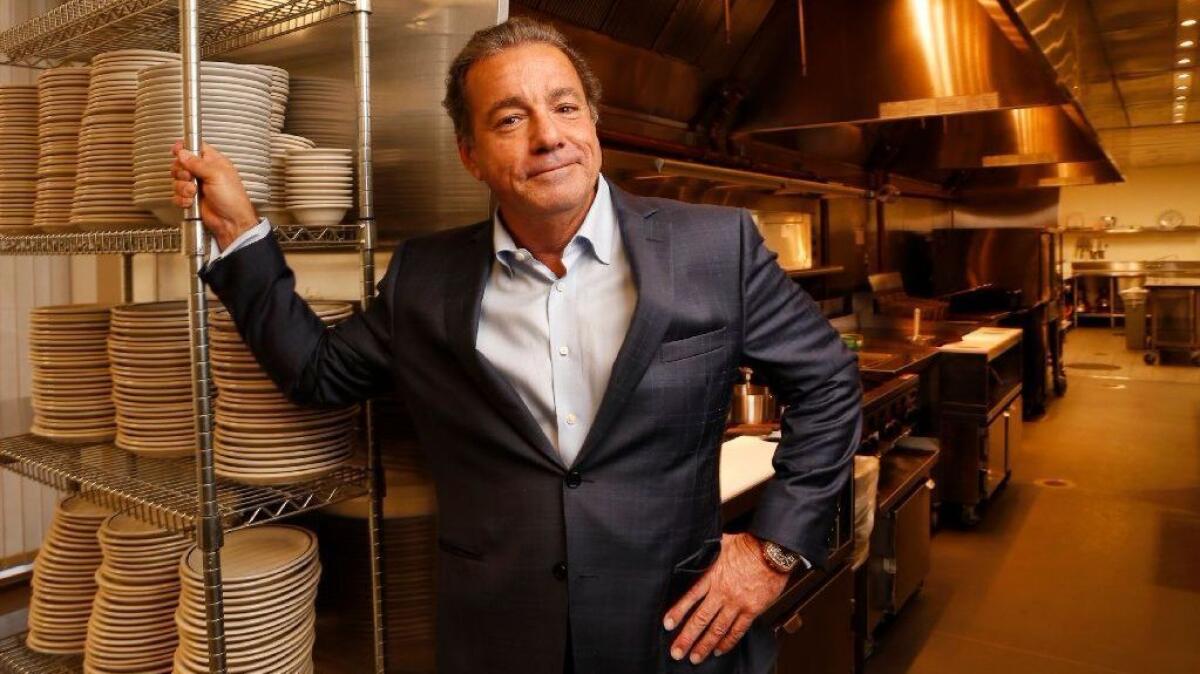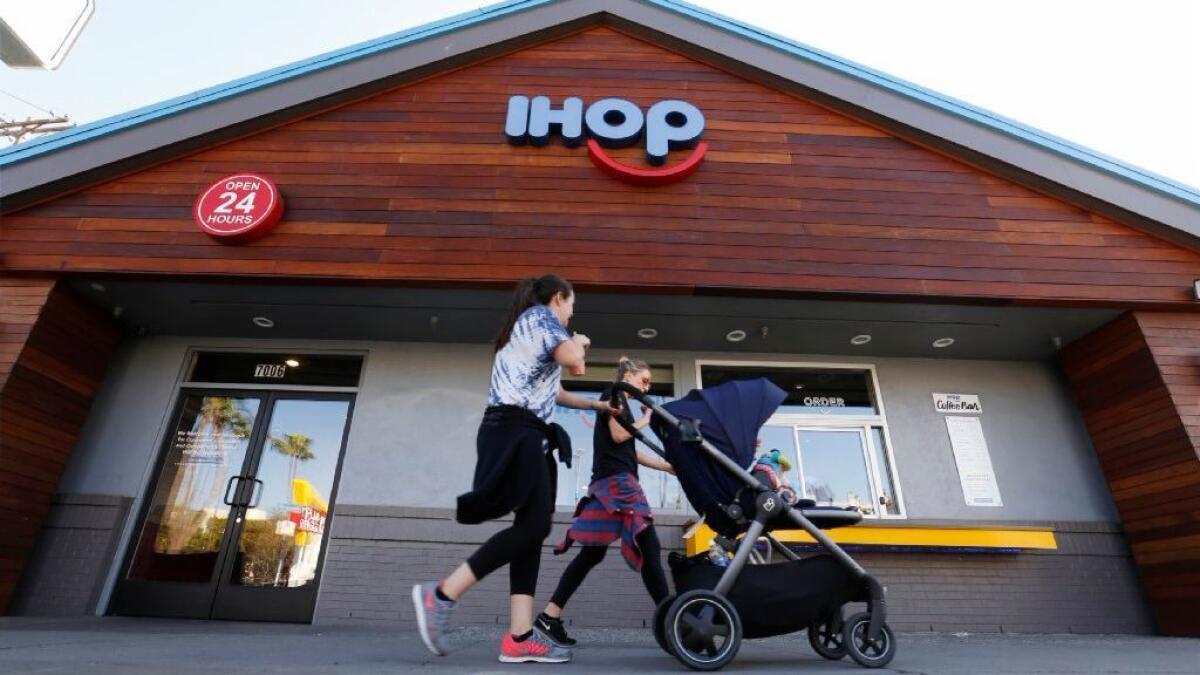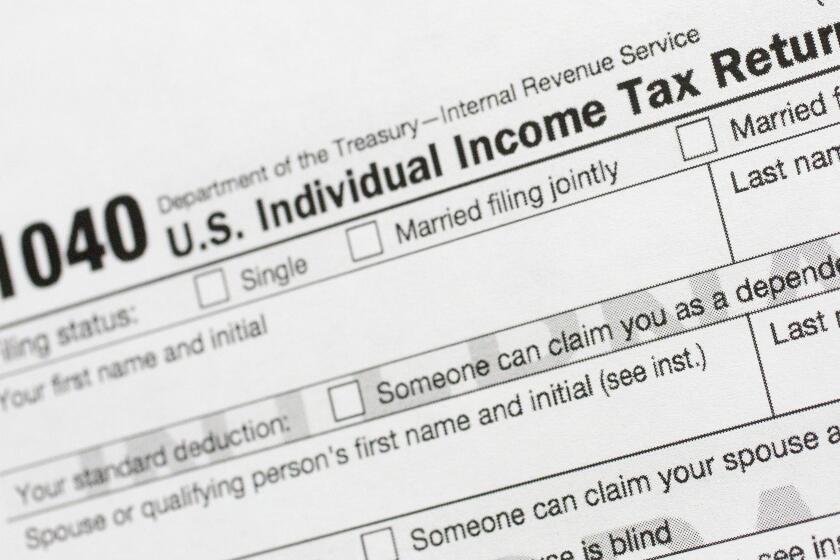Applebee’s and IHOP’s new recipe for success: technology, takeout and takeovers

With free birthday meals and all-you-can-eat riblets, the IHOP and Applebee’s restaurant chains became a traditional stop for millions of American families seeking a feast.
But casual dining restaurants began to lose their appeal for millennial-generation foodies, and in 2016, Applebee’s tried to update its image. The restaurant got rid of its signature riblets and other items and introduced more upscale options, including steak cooked on wood grills that were newly installed in restaurants.
The move quickly backfired. In the first three months of 2017, Applebee’s’ same-store sales — sales at restaurants open at least 18 months, a key measure of performance — dropped 7.9% from a year earlier, said Stephen Anderson, a Maxim Group analyst who focuses on casual dining restaurants.
IHOP saw a 2.1% decrease in same-store sales that quarter, which reflected the slump overall at fast-casual restaurants. And the numbers kept slipping.
“We lost a little relevance with our customers,” said Stephen P. Joyce, chief executive of DineEquity Inc., the Glendale company that owns IHOP and Applebee’s. “We forgot what the customer expects from us and got a wake-up call.”
Joyce, who joined the company in September after a decade leading Choice Hotels, has a plan to turn the business around over five years.
We forgot what the customer expects from us and got a wake up call.
— Stephen P. Joyce, DineEquity Inc. chief executive
The company is adding technology to make ordering more convenient, Joyce said, and is paying more attention to “off-premise dining,” — that is, takeout orders, often handled by food-delivery services.
DineEquity also wants to expand by acquiring other restaurants, particularly in the fast-casual segment. To reflect the effort, DineEquity Inc. changed its name Tuesday to Dine Brands Global Inc.
DineEquity and the rest of the casual-dining segment of the industry has had a difficult couple of years, partly because restaurant growth has exceeded population growth and demand for those types of restaurants, said Victor Fernandez, executive director of insights and knowledge for TDn2K, which tracks the restaurant industry.
Overall, casual dining restaurants suffered a 1.3% decline in same-store sales in 2017 compared with the year before while the bar-and-grill segment, including Applebee’s, fared even worse with a 2.5% drop.
Several casual dining restaurants also misjudged the market and implemented changes that scared off core customers, Anderson said.
Chili’s “chased consumer trends” by expanding its menu, president Kelli Valade told the Los Angeles Times in September. But that gave the restaurant a “fuzzy food reputation,” she said. Like Applebees, Chili’s went back to basics after experiencing same-store sales decreases in 2016 and 2017.
In contrast, Panera Bread Co., Chipotle Mexican Grill Inc. and other fast-casual chains posted a 5.7% overall sales increase in 2017, Fernandez said. Such fast-casual chains are often cheaper and more healthful than casual-dining restaurants, and they get almost half their sales from off-premise dining, he said.
People want food whenever and wherever they want it. They eat at odd hours, not just breakfast, lunch and dinner, and a lot more food is consumed off-premise, whether that’s via delivery or takeout, Fernandez said.
“If you think from a value perspective — price, convenience, speed — quick service and fast casual are more attractive to customers now,” Fernandez said.
Dine Brands is reaching for a slice of the fast-casual restaurant segment’s growth. By the end of the year Dine Brands aims to identify its first acquisition, which will probably be a healthful, ethnic, fast-casual restaurant with a regional presence that the company can grow to be a national brand, Joyce said.

“We see Dine Brands as a holding company that will continue to grow and bring in brands and support the brands who operate … with their own personalities,” Joyce said.
Anderson said having a portfolio of brands has the potential to cut costs and offset losses for IHOP and Applebee’s, but investors will want to see stability across all brands. Dine Brands will need to continue stabilizing its brands before adding any others, which will take at least a few quarters, he added.
The company also is experimenting with technology.
Dine Brands launched new websites and mobile apps for Applebee’s and IHOP this year, and rolled out online ordering for IHOP in the last half of 2017. In the next 18 months, all Applebee’s and IHOP restaurants will have Wi-Fi, tabletop tablets people can use to order food and mobile-phone checkout, said Adrian Butler, Dine Brands’ chief information officer.
“You’ll be able to order your meal and sit down. It’ll get delivered almost immediately,” Joyce said. “You’ll know whether or not there’s a wait.There will be no point when the customer doesn’t control their own timetable.”
Another big focus will be off-premise dining, Butler said. That includes partnering with delivery companies such as UberEats, DoorDash and Grubhub, as well as more unexpected companies, such as General Motors. Dine Brands worked with GM to develop technology that enables drivers to order food by tapping the IHOP or Applebee’s logos on their dashboards, Butler said.
“Our brands need to own our representative share of these marketplaces,” Butler said. “So you see us going into the various marketplaces for us to learn, to make sure we’re where the guest is.”
Butler said Dine Brands will need to avoid having “tons of technology tossed” at customers and educate them about the different ways they can use the technology, whether it’s on their mobile phones, in their car or in restaurants.
Applebee’s and IHOP have also reverted to offering the deals, food and environment they are known for. IHOP started the year with an all-you-can-eat pancake day for $3.99 and Applebee’s offered $1 Bahama Mama drinks for all of February, for instance, which lured in younger customers and led to sales increases.
As the company has begun implementing its new strategy in the last few months, Dine Brands has been “in good shape financially,” Joyce said.
In the last three months of the 2017, Applebee’s’ same-store sales rose 1.3%, the first increase since the second quarter of 2015, Applebee’s President John Cywinski said in a call with analysts Tuesday.
IHOP President Darren Rebelez said IHOP’s same-store sales declined 0.4%, which is consistent with the casual-dining category’s declines.
DineEquity posted fourth-quarter earnings Tuesday that were better than Wall Street expected even as the quarterly dividend was reduced to 63 cents a share from 97 cents in the previous quarter. The stock, which has been on the rise since September, jumped 16% on Tuesday’s earnings news and an additional 5.7% on Wednesday to $67.03.
Net income was $85.5 million, or $4.67 a share, for the final three months of the year, up from $21.3 million, or $1.18 a share, in the same period of 2016. Much of that increase came from a $66.6-million tax benefit, the company said.
In 2017, a net total of 80 Applebee’s franchised restaurants closed and 54 IHOP restaurants opened, the company said. Between 60 and 80 Applebee’s and 30 and 40 IHOP restaurants are expected to close in 2018. But by 2022, the company plans to open 500 restaurants internationally, Joyce said.
Anderson said he thinks Dine Brands has the right idea in thinning out restaurants in markets that aren’t performing well and thinking about how it can use technology to best serve customers. The company’s plan to avoid being a “hip millennial destination” is also a plus.
“We’re comfortable with who we are and what we stand for and we simply wouldn’t pretend to be an overly hip or trendy brand,” Cywinski told analysts Tuesday. “It’s unlikely you’ll see sriracha, quinoa or pomegranate any time soon.”
To read this article in Spanish, click here
Twitter: @r_valejandra
UPDATES:
2:45 p.m.: This article was updated with the company’s stock price.
This article was originally published at 7 a.m.
More to Read
Inside the business of entertainment
The Wide Shot brings you news, analysis and insights on everything from streaming wars to production — and what it all means for the future.
You may occasionally receive promotional content from the Los Angeles Times.











